France is the world’s #1 travel destination and is synonymous with the good life: romance, fine foods, amazing art and incredible destinations. Many of the best spots are off the beaten path and best reached by driving a rental car. That can be intimidating for many people, but it doesn’t have to be! Here’s everything you need to know about driving in France.
Renting a car in France and driving on your own can be scary prospect. If we can leave you with only one lesson, it doesn’t have to be intimidating. YOU CAN DO THIS!
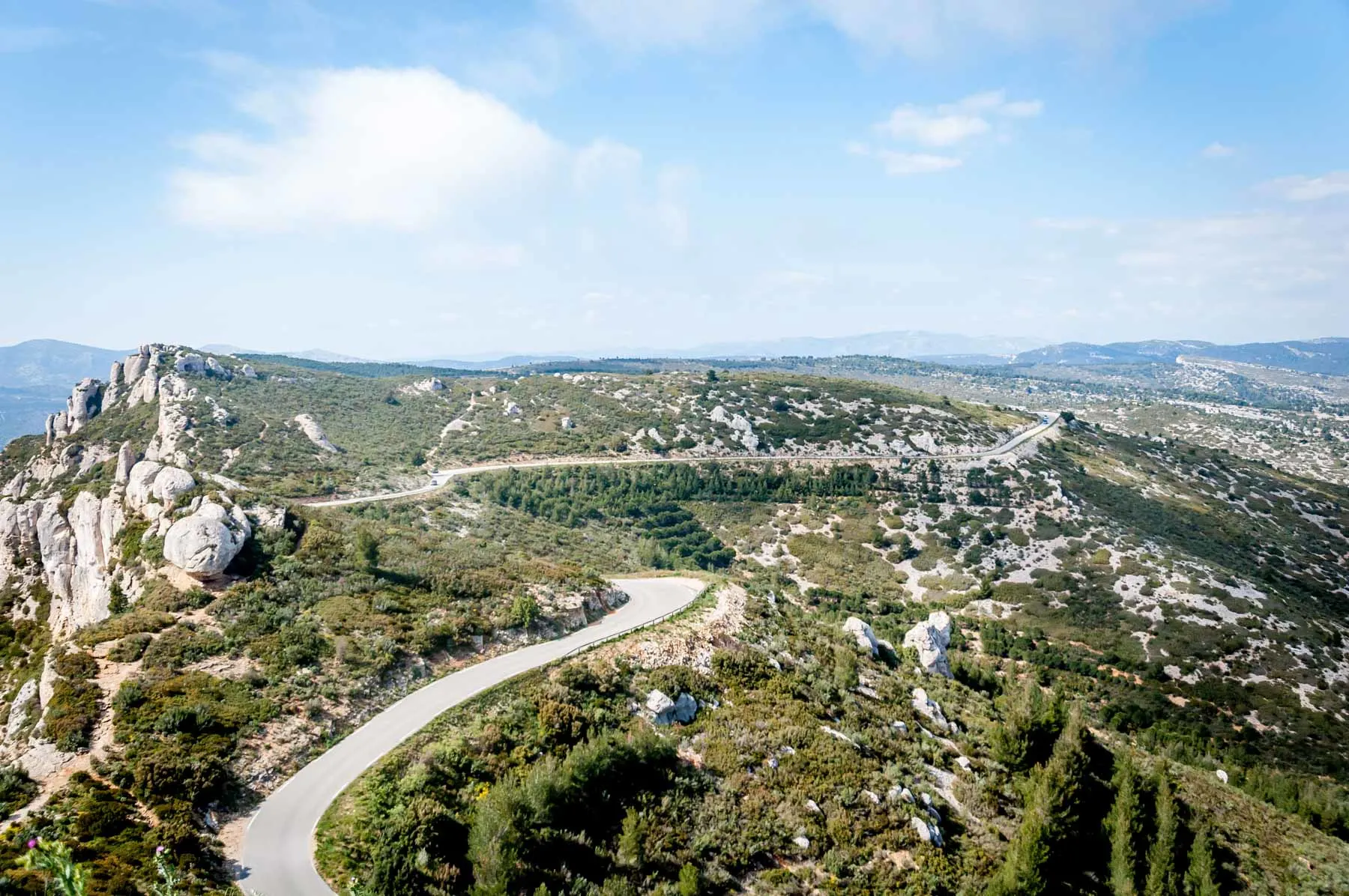
Trust us, we should know. We wrote the book on driving overseas. No really, we did. You can find our book, The Essential Guide to Driving Abroad, on Amazon. We mention this not to sell books, but to illustrate that we really know what we’re talking about.
We’ve rented cars and drove all over France: from Brittany to Provence, and the Basque Country to Alsace. We’ve crisscrossed the country many times by car discovering lots of hidden gems and seeing all the famous French landmarks. And want to share those lessons with you below!
Driver’s License
First, your driver’s license from the U.S. or Canada or your home country is valid in France. This is a question we get all the time. YES! You can drive in France on an American driver’s license.
However, there are times when it might be helpful to have an International Driver’s Permit (IDP). The IDP sounds fancier than it really is. It essentially translates your existing driver’s license into a bunch of languages (including French). They are cheap ($20), easy to get, and can save a load of hassle, particularly in the countryside. You can pick one up from AAA (or CAA in Canada).
It is also a good idea to carry your passport with you at all times. We’ve been stopped by police in France and they have wanted to see both the driver’s license and the passport at the same time. And you will need to present both a license and your passport to rent a car.
Renting a Car
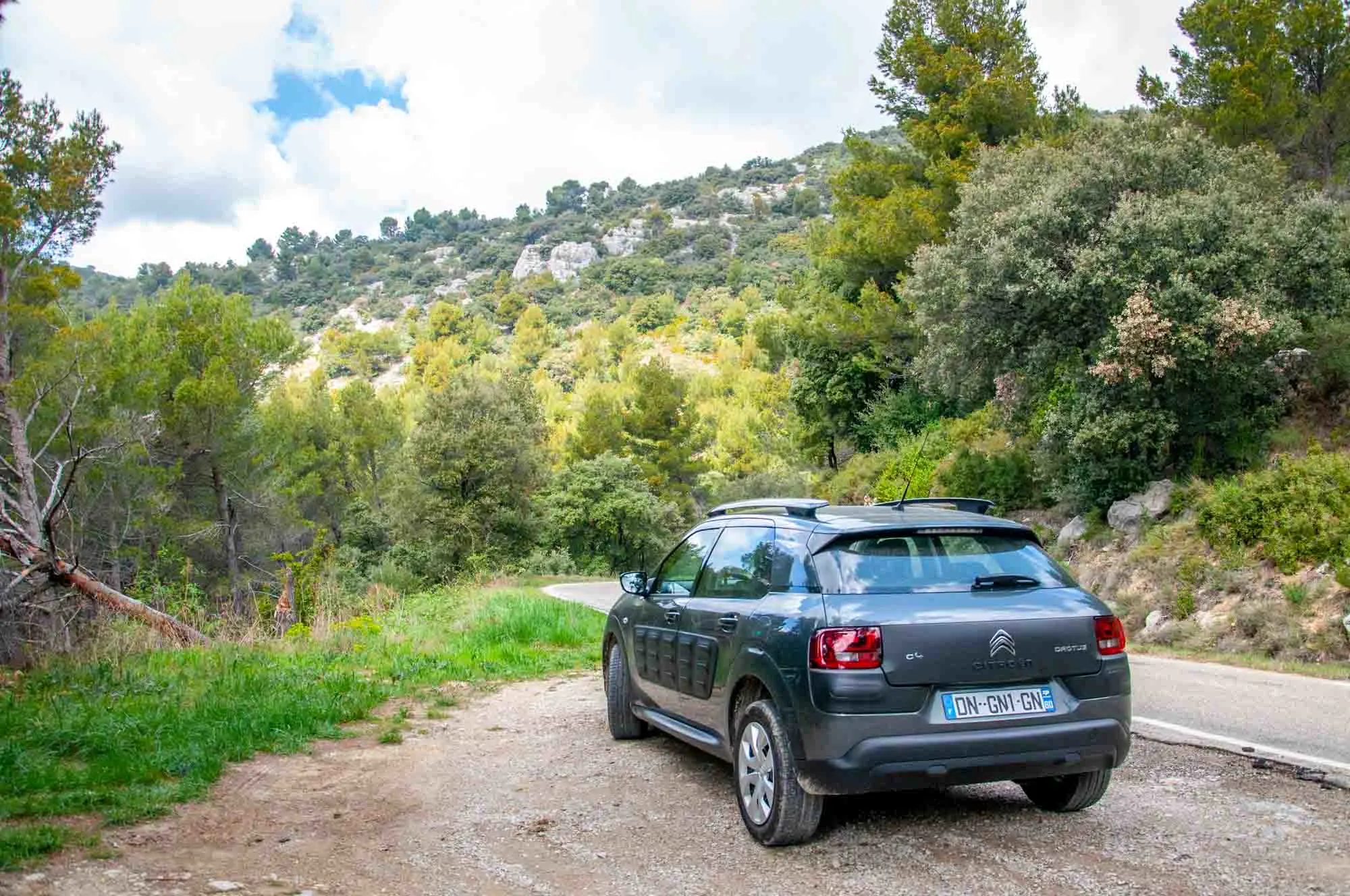
You can rent a car in France with a U.S. driver’s license. It is usually a simple process of booking online and then showing your driver’s license when you pick up the car. We have been asked if we had an IDP in both Alsace and Bordeaux when renting a car, but have not needed to show it.
Many of the same requirements for renting a car in the U.S. or Canada also apply to France. You need a valid driver’s license and some form of insurance. Specifically, under French law, you are required to have unlimited third-party liability insurance. Most major rental car companies (Hertz, Sixt, etc.) will include that automatically. If you are renting from a small/local/no-name company, confirm that this is included.
We recommend shopping around for rental rates as they will vary wildly. We use a comparison tool like Discover Cars to get the best rates.
Like the U.S., you generally need to be over age 25 to rent, or face additional “young driver” fees and stipulations (i.e., they will only rent you older, less desirable cars).
The big decision in France is automatic transmission or manual transmission? It is true that manual transmission cars are much more common in France and also less expensive to rent. However, if you don’t know how to drive a stick shift, that will limit you to the more expensive automatics. In the past, the price difference has been huge, however, in recent years, automatics have become much more affordable.
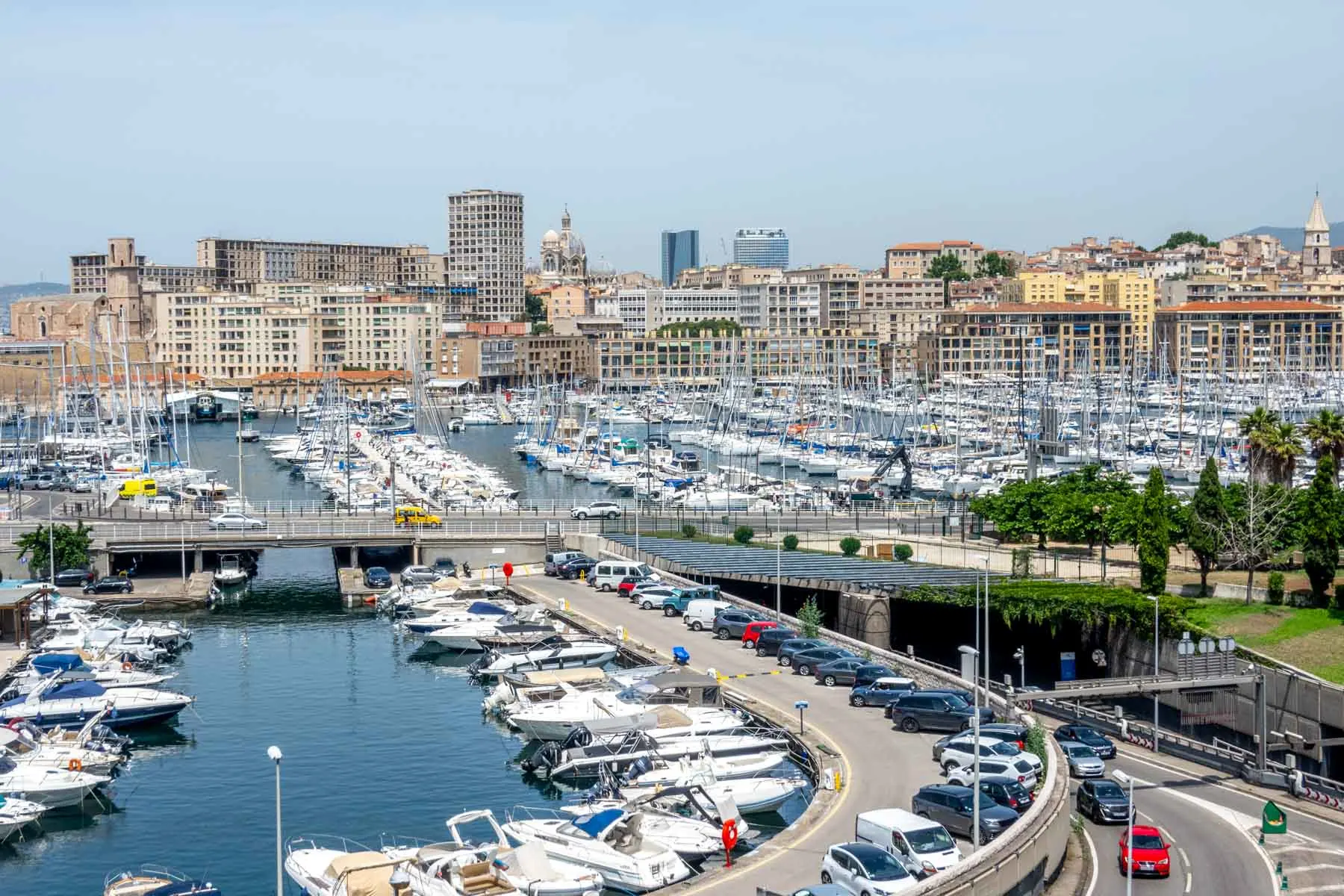
Pro tip: Parking spaces are much smaller in Europe in general, including France. We always opt for the smallest car type that will fit us and our luggage. Rental agencies love to upsell Americans on the “upgrade.” You’ll find that upgrade comes with the very real drawback of fitting it into a parking spot.
Required Equipment in the Car
In France, there are a couple of required pieces of equipment that you must have in the car. These should be provided by the rental car company, but check before you take possession of the vehicle:
Yellow safety vest: You should have a yellow or orange safety vest for emergencies. It should be kept inside the car and put on immediately outside. You should not have it in the trunk.
Emergency triangle sign: You should have a pop-up emergency triangle in the trunk of the vehicle to deploy in case of breakdown or accident.
Breathalyzer: In 2013, France passed a unique law requiring all vehicles to have a breathalyzer in it. But there were no fines for not having one, so it was a toothless law largely ignored by everyone. In 2020, the law was officially repealed. You might still see this mentioned on the Internet or in old documentation from the rental car company. Don’t worry, you don’t need it. And if you get pulled over by the police, they will have a breathalyzer ready for you. (DO NOT drink and drive – the penalties can be severe.)
Types of Roads
First and most obvious, if you are wondering what side of the ride to drive on, it’s the right. Just like in the U.S. or Canada. And just like at home, you’ll encounter different kinds of roads and driving conditions.
Autoroutes
In France, the highways are called autoroutes and are labeled on the map with an designation A and a number (such as A6 between Paris and Lyon, or the A7 connecting lots of great places in the south of France). Most of these are toll routes and you’ll encounter toll plazas at regular intervals. You can pay for the tolls with cash or credit card.
Just like in the U.S. and Canada, you’ll drive right, pass left. Stay to the right unless passing (don’t sit in the fast lane). Use your turn signal to indicate lane changes and be respectful of other drivers.
These roads are less scenic; however, they are efficient in covering large distances between major cities.
Route Nationales
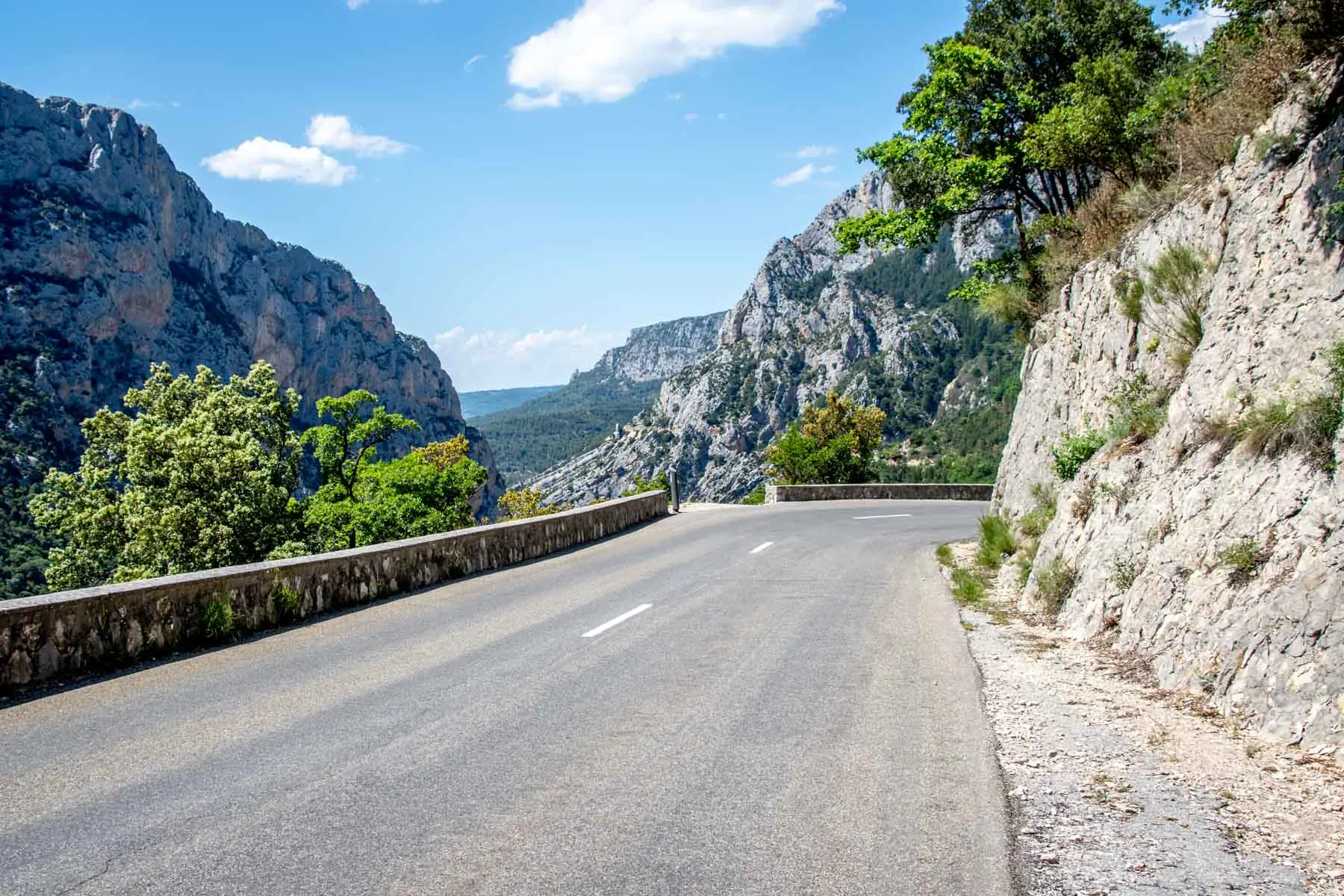
These national routes are typical major thoroughfares but connect lesser cities. They are designated by the letter N and then a number. The more digits, the less significant the roadway. For example, the N4 is a major roadway connecting Paris and the Champagne wine region, but the N104 is a short spur only going between two other highways.
These roads are typically one lane in each direction, but you might also get passing lanes and turning lanes at major junctions.
Routes Departementales
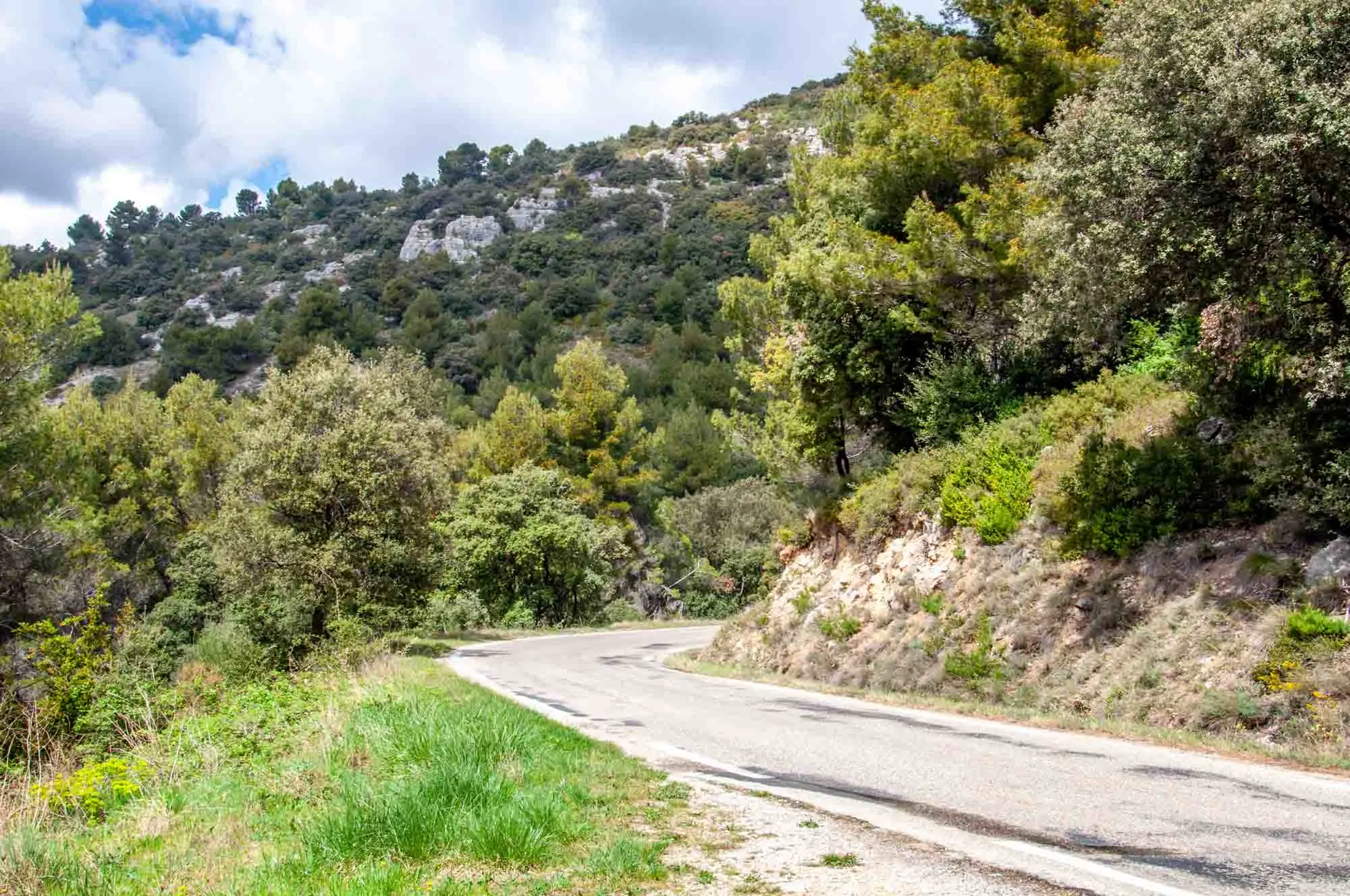
These are smaller roads that are designed by a D and a number. The more digits, the less significant the roadway. They connect small villages with small regional economic centers.
You’ll find that some of the best destinations lie at the end of these small roads. The Alsatian wine route and the Cotes du Rhone wine road are both D roads, as is Monet’s garden in Giverny.
Local Roads
These roadways do not have a letter/number designation and are instead called by a street name, such as Rue du Poncet in the Champagne region. They are almost always one large lane with no center line. It is usually possible for two cars to pass going in opposite directions, but sometimes it requires cooperative driving and letting the other person go.
Tolls
If you are driving in France, you should expect to encounter tolls on the autoroutes, as well as at some bridges and tunnels. You’ll see toll roads and toll plazas designed with the word Péage.
If this is your first time driving in Europe, it can come as quite a shock how expensive some of the tolls can be. If you are wondering if the amount is correct, it probably is. Think of it as a small fee to see such a beautiful country!
Speed Limits
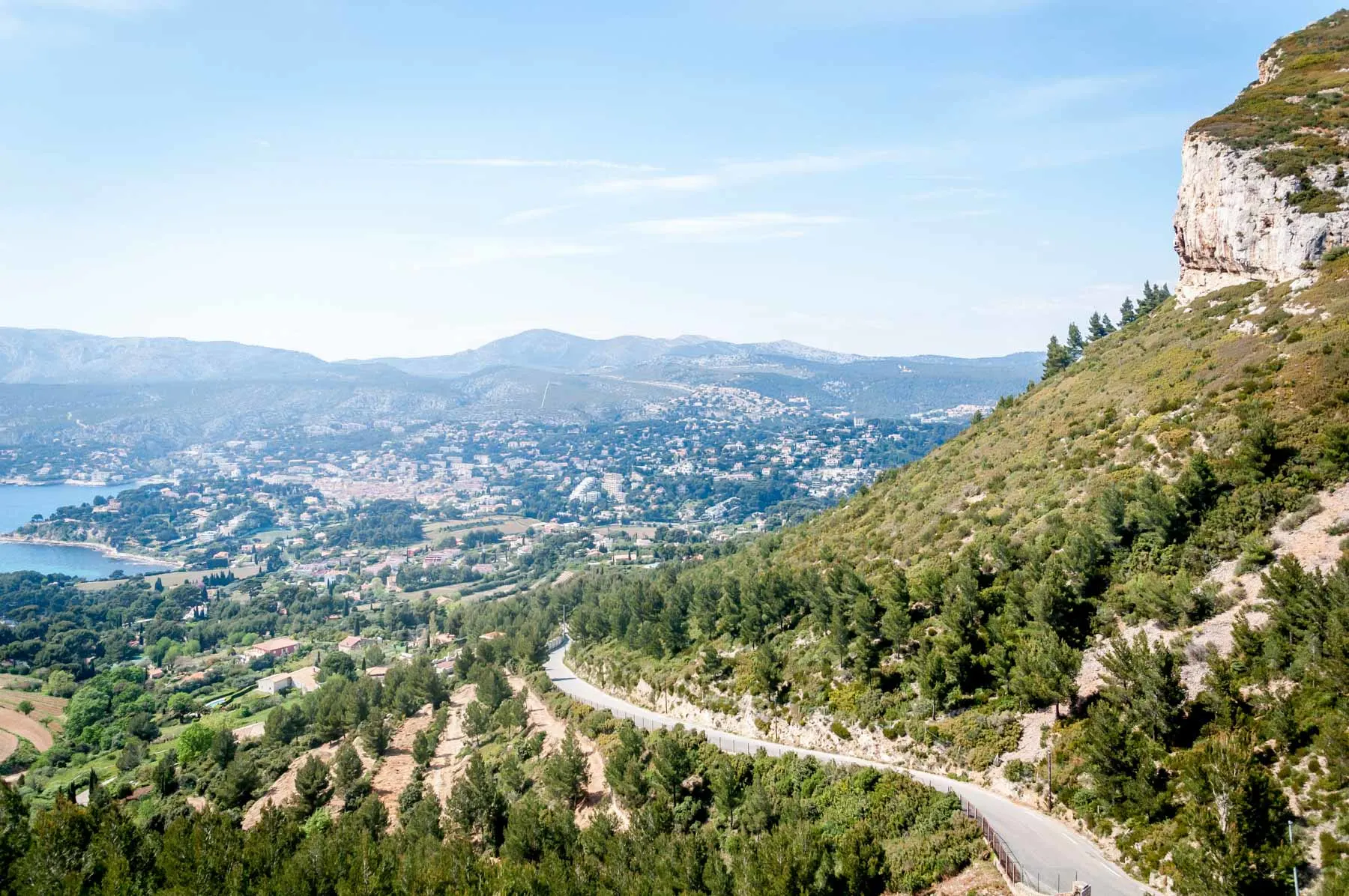
Speed limits in France are probably one of the most confusing aspects of driving. The reason is that you often don’t know the speed limits.
For example, the official French speed limits across the whole country are:
- Autoroutes: 130km/hr (80 mph), but that is reduced to 110km/hr (68mph) when raining. There is a further drop to 50km/hr (30mph) in periods of limited visibility (such as snow, fog, etc.).
- N and D Roads: In roads considered single carriageway (one lane in each direction), the speed is 80km/hr (50mph), dropping to 50km/hr (30mph) in poor visibility.
- Local roads and in cities: 50km/hr (30mph).
Know the speed limits. You are accountable for them, even if there aren’t signs posted. And rarely are speed limit signs posted in France off of major roads.
But here’s the thing. Due to law changes in France beginning in 2018, local authorities can also increase or reduce the speed limits on smaller roads. And there usually isn’t a sign indicating the new speed. Somehow, you’re just supposed to know. It can be frustrating as a foreign driver.
Traffic Enforcement and Speeding
Policing whether cars are speeding or not has largely been left up to surveillance. Rarely do police get involved in ticketing speeders. Instead, you’re more likely to get your photo snapped by a camera violating the speed limit and a ticket sent to you (or sent to the rental car company, who conveniently has your credit card information).
There are two kinds of monitoring devices:
Traffic Cameras
These are fixed cameras by the side of the road where speeding is likely (downhills or uphill sections of roadway, transitions from rural highways, entrances to small villages, etc.). The cameras are housed in metal cabinets and point out at the roadway, snapping shots of drivers.
There are approximately 4,000 cameras throughout the country, so you’ll likely see a couple every day on your travels. On our South of France trip, we once counted 11 in a single day.
Private Speed Camera Cars
In 2018, France enabled private speed camera cars to catch drivers. These are unmarked vehicles owned by private companies who monitor speeds and take pictures of speeders, but while moving. There are about 500 of these vehicles on the road on a constant basis.
While the claim is that such cameras (more than in any other country in Europe) is to make the roads safer, these cameras are really a major revenue driver for the country. Speeding fines from cameras generates nearly $1 billion in revenue (and another $800 million in fines issued by police officers). Speeding fines is the fastest growing income source for the country.
Given the poor signage and the near ubiquitous nature of speed cameras, it is very likely you’ll get a ticket. Speed tickets have been issued for even 1 km/hr over the speed limit. If you get a ticket, try not to fret about it. It happens. Don’t let it ruin your trip.
Special Traffic Laws in France
Yield to the Right or Priorité à Droite
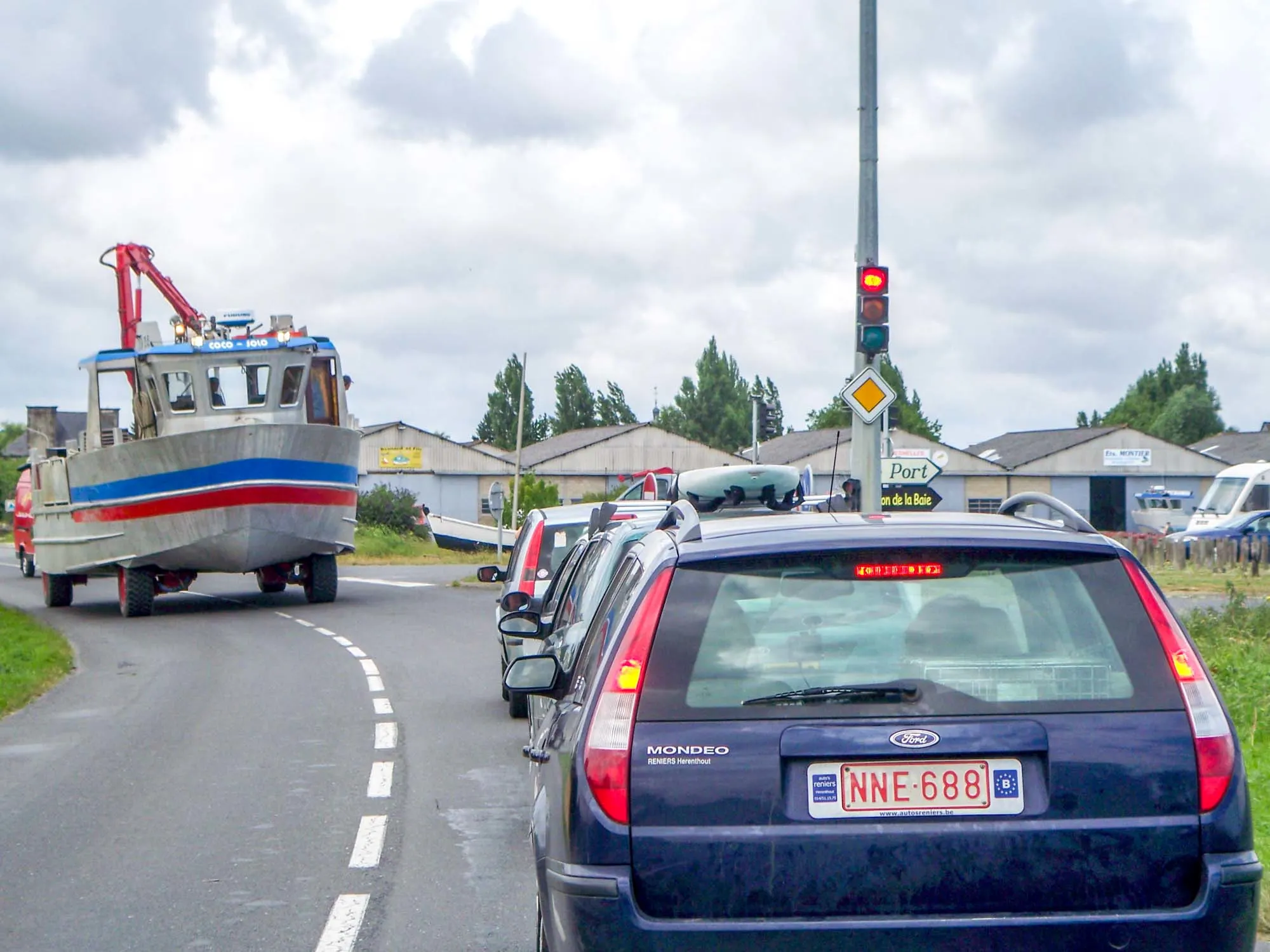
This is a difficult one for Americans because it generates tons of confusion (both with tourists and also with locals). The concept is “Yield to the Right.” When driving a car entering from the right should be given priority. So, as you are driving along, you’ll suddenly find a car pulling out into traffic from a minor roadway. To our minds, it is really dangerous and we’ve seen numerous accidents happen this way.
To complicate matters, there’s a near infinite number of exceptions to this rule. And yes, you guessed it, they aren’t well marked with signs. First, it doesn’t apply to autoroutes. Second, it generally does not apply at roundabouts (where standard laws apply – you must yield to a car already in the circle). And finally, if the route is marked with a priority road sign (a yellow diamond with a white border), you don’t have to yield. BUT, these routes are rarely marked with signs as a car comes in from the minor road. So if you are driving on the minor road, you don’t know if it is priority or not.
The reality is: drive defensively and watch for cars turning in front of you.
Right on Red
This isn’t America. There is no right on red in France. Often there are too many pedestrians to make a turn safely. Wait for the green. The ONLY exception to this is if there is a sign explicitly allowing it (and such situations are very rare).
Parking
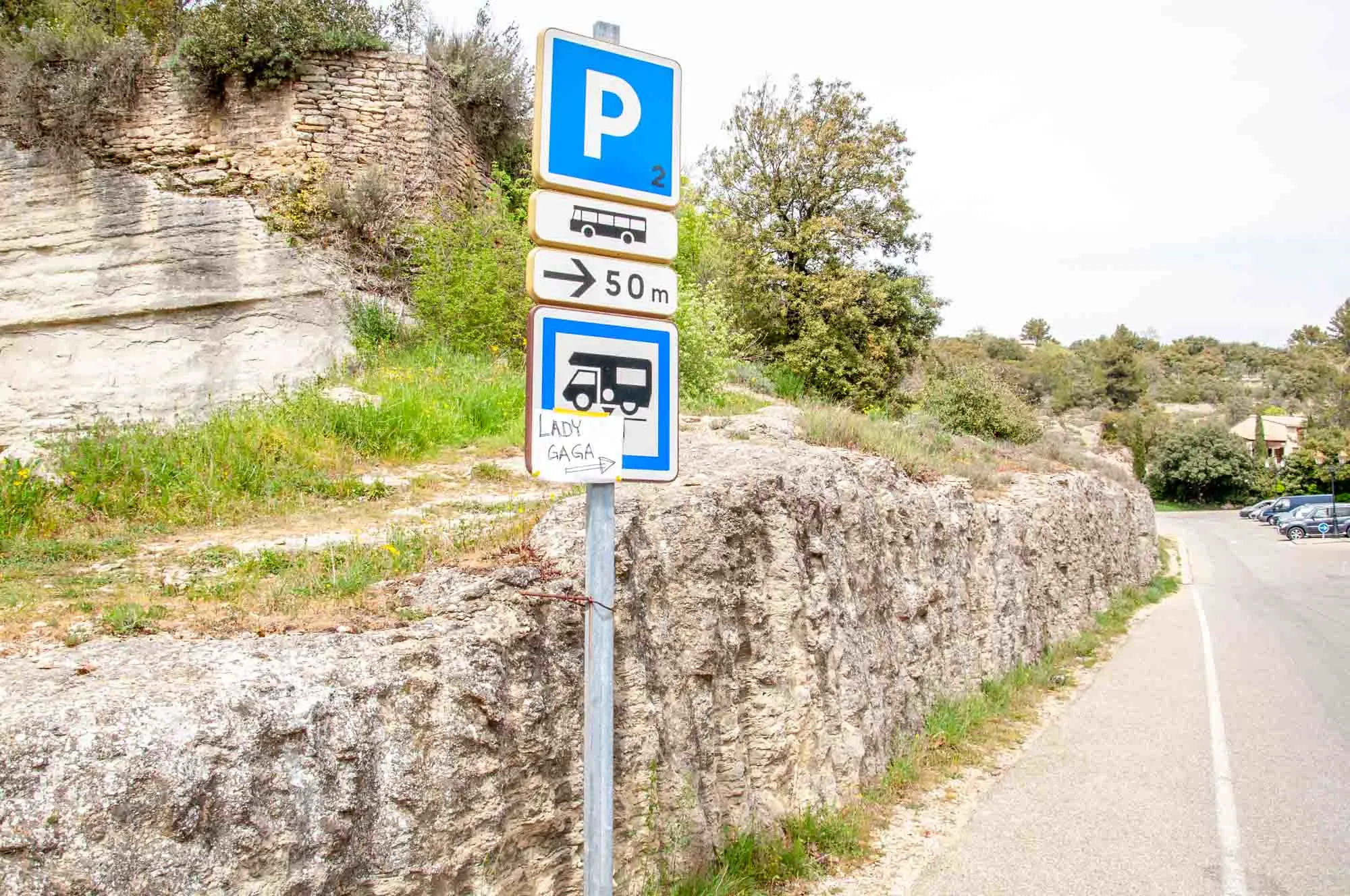
Parking in France is like anywhere else in Europe. They have old cities that weren’t built to accommodate cars, so space is always at a premium. That said, follow the standard parking rules and you will be fine.
Look at the signs. A blue circle with a red border and a red slash through it means no parking. A blue circle with a red border and an X through it means no stopping or no standing. Sometimes the signs can be confusing. Do your best. We got a parking ticket in Colmar thinking we were fine. The fees weren’t that hefty.
Next, look at the curbs. Because France has poor street signage, sometimes they just paint the curb and don’t put up signs. If you see a single yellow line, that means no parking and no stopping/standing. A broken yellow line (or dashed line) means that it is a loading zone and you can stop to load/unload your vehicle but not park. A painted white line means pay parking is in effect. A blue painted curb means free parking for a limited time (usually indicated by a sign).
Nearly all parking (whether street or lot) is pay parking. For street parking, look for the pay kiosk marked “Payant.” You’ll have to pay, take a display ticket and put it on your dash. In recent years, France has also rolled out more automated kiosks where you just type in license plate for your rental vehicle (and there is no display ticket). Such on-street parking is relatively economical.
The other option is a parking lot or parking garage. There is usually a gate to let in that will dispense a ticket. Take that ticket with you and pay at the kiosk (usually near the exit) before returning to your car.

Pro tip: Driving into the historic core of most cities in France is a special kind of hell. But all of them usually have a major street that forms a kind of ring road. It is often the boundary of the “old city” with the rest of city. It’s still in the interior of the city so it is close to everything, and yet is still a modern road. And in most French cities, there are usually multiple parking garages located along that road.
Find a large, modern garage, head to either the very top floor or the very bottom floor (depending on where you come in) since there will be fewer cars in those areas, and plop yourself into the biggest spot you can find. Walk the rest of the way. It’s a tried-and-true method for remaining sane, and has worked well for us in cities such as Avignon or Bordeaux.
What to Do If You Have an Accident or Breakdown
If you have an auto accident in France or breakdown on the roadways, put on your yellow, high-visibility vest and deploy your emergency triangle approximately 30 yards from the rear of your vehicle to warn other drivers. Call the emergency number 112 from your mobile or the orange emergency phones found every 2km on the roadways. Ask for an English-speaking assistant, who will guide you on what to do.
On autoroutes, your vehicle will need to be towed to a recovery zone by a local company. From there, your rental company’s roadside assistance provider can help. On other roads (D, N and local roads), your roadside assistance company can assist directly.
You may be instructed to fill out a driver declaration (called a constat amiable or amiable declaration) on the spot, which is similar to exchanging information in the U.S. Take direction from your rental company’s roadside assistance operator. Please note: If there are any kind of injuries, even minor, you must wait onsite for the police to arrive.
Tips for Americans
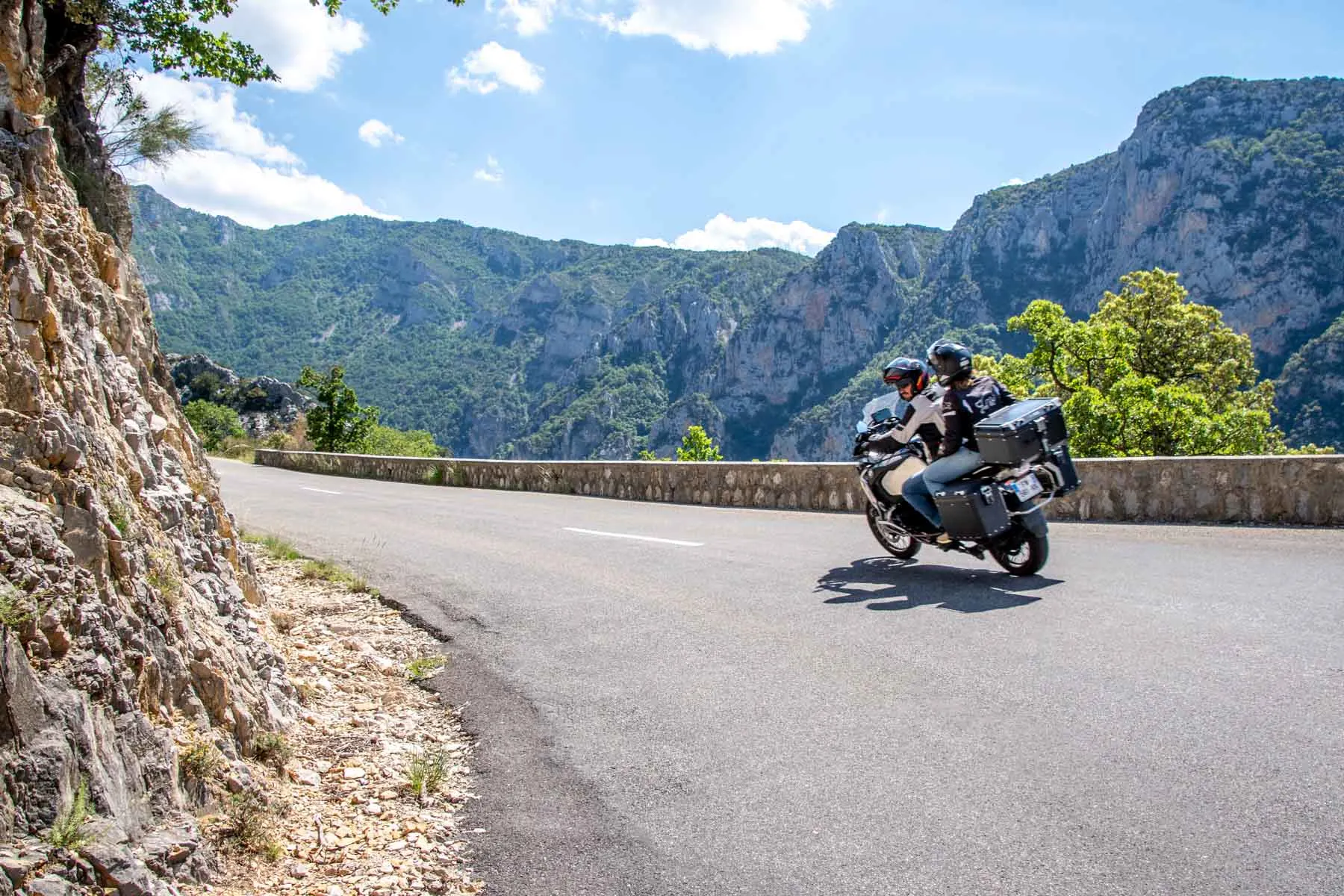
Other tips or laws to be aware of:
- Seatbelts are required for everyone.
- No children under the age of 10 in the front seat.
- It is illegal to talk on the phone (even with a hands-free headset) or hold your phone in your hand while driving.
- Reminder: No right turn on red.
- Do not drink and drive. The BAC limit in France is 0.05% (lower than in the U.S.) and the penalties are severe. Police set up random sobriety check points and EVERYONE must take a breathalyzer (not just those who seem impaired).
- Headlight use is mandatory at night. And when it is raining. And when driving through a tunnel. And when driving through an emergency or construction zone.
- It is illegal to drive on a bus lane (unless you are a taxi).
- Watch for motorcycles and mopeds. They can be difficult to see! And often break traffic laws for convenience.
- On roadways, it is illegal to cross a solid white line (such as overtaking/passing, or making a left, or making a right).
- The color of lights matter. Do not proceed or enter an area with a flashing red light (such as a tunnel, etc.). But, you can proceed on a flashing yellow light with caution.
- Pay attention to the fuel grade when pumping at gas stations. The color of the handle is different from what you are used to in the U.S. There are three fuel grades 95-Octane (Sans plomb 95), 98-Octane (Sans plomb 98) and diesel (labeled diesel, gasoil, or gazole depending on the station). Consult your rental car for the appropriate gas to dispense.
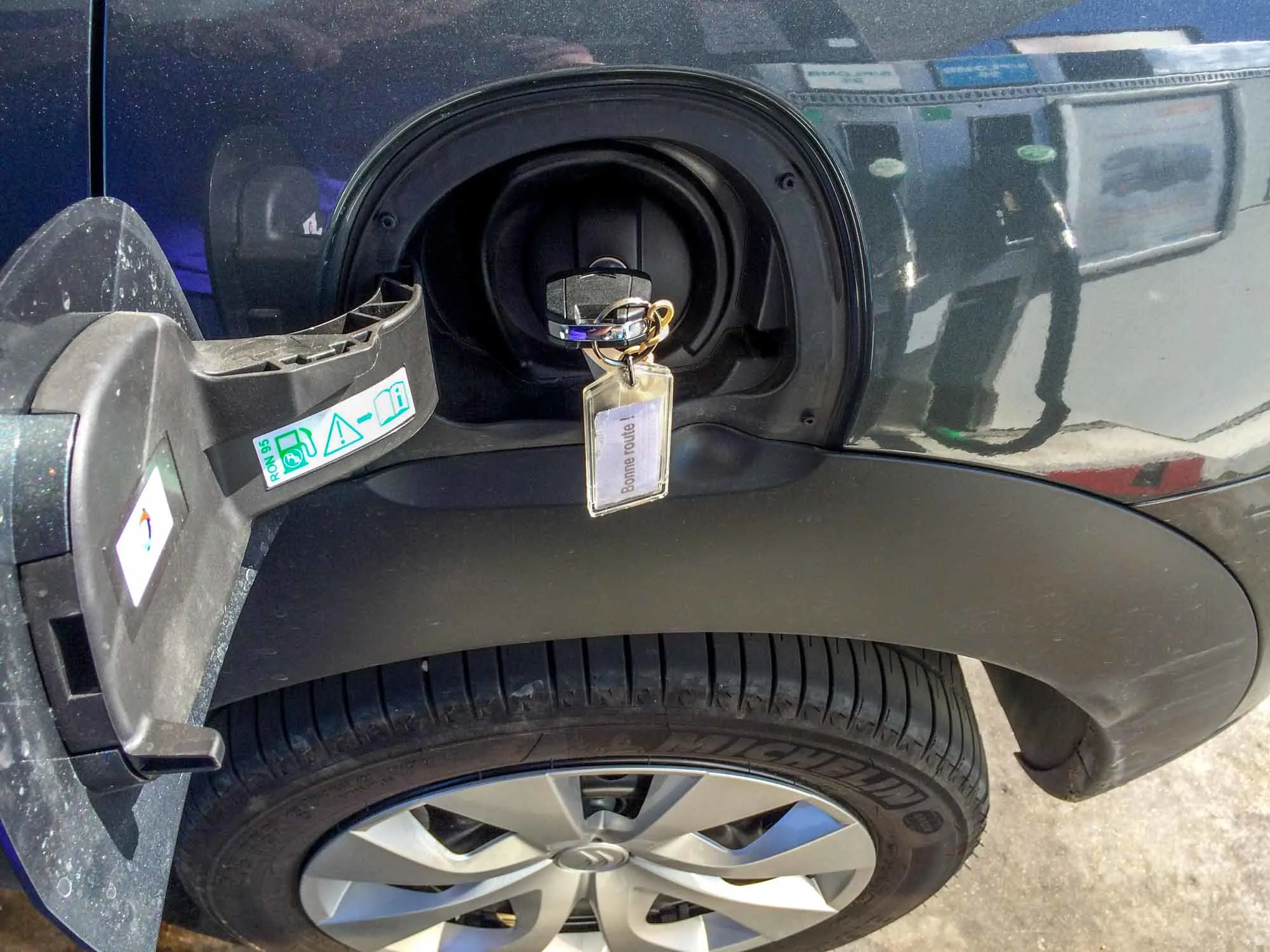
Have you driven in France? What was your experience or impressions?
Lance Longwell is a travel writer and photographer who has published Travel Addicts since 2008, making it one of the oldest travel blogs. He is a life-long traveler, having visited all 50 of the United States by the time he graduated high school. Lance has continued his adventures by visiting 70 countries on 5 continents – all in search of the world’s perfect sausage. He’s a passionate foodie and enjoys hot springs and cultural oddities. When he’s not traveling (or writing about travel), you’ll find him photographing his hometown of Philadelphia.
